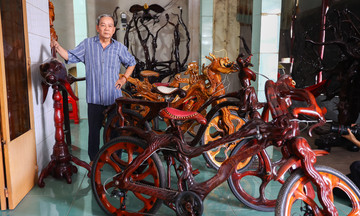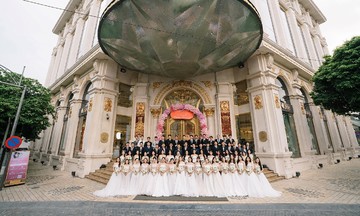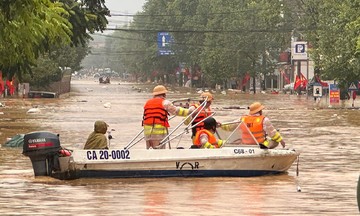As the world increasingly prioritizes quality of life and a work-life balance, coastal urban areas are attracting attention not just as tourist destinations but also as places for long-term residence. Many coastal cities are developing infrastructure, services, and amenities to meet the needs of permanent residents, including foreigners. This trend is driving notable changes in many Asian countries, including Vietnam.
 |
Residents are flocking to bayside urban areas. Photo: La Tien Villa |
Residents are flocking to bayside urban areas. Photo: La Tien Villa
International migration shifting towards Asian coastal cities
For over a decade, coastal cities like Lisbon (Portugal), Nice (France), Miami (USA), and Gold Coast (Australia) have been favored by international residents seeking not just vacations but also long-term living. According to Knight Frank's The Wealth Report 2024, demand for waterfront properties has increased by 45% in the past 3 years, especially among wealthy investors from Europe and Asia.
This coastal living trend is now spreading rapidly in Southeast Asia. In Indonesia, the Philippines, and Thailand, cities like Bali, Cebu, and Phuket are seeing the formation of stable international resident communities, with people working remotely and starting businesses. Favorable climate, digital infrastructure, and cost of living are key drivers.
Following this trend, Vietnam, with its coastline of over 3,200 km, is starting to attract a wave of foreign residents. From Da Nang and Hoi An to Vung Tau and Nha Trang, coastal cities with good quality of life are gradually establishing themselves not only as tourist destinations but also as places for long-term living.
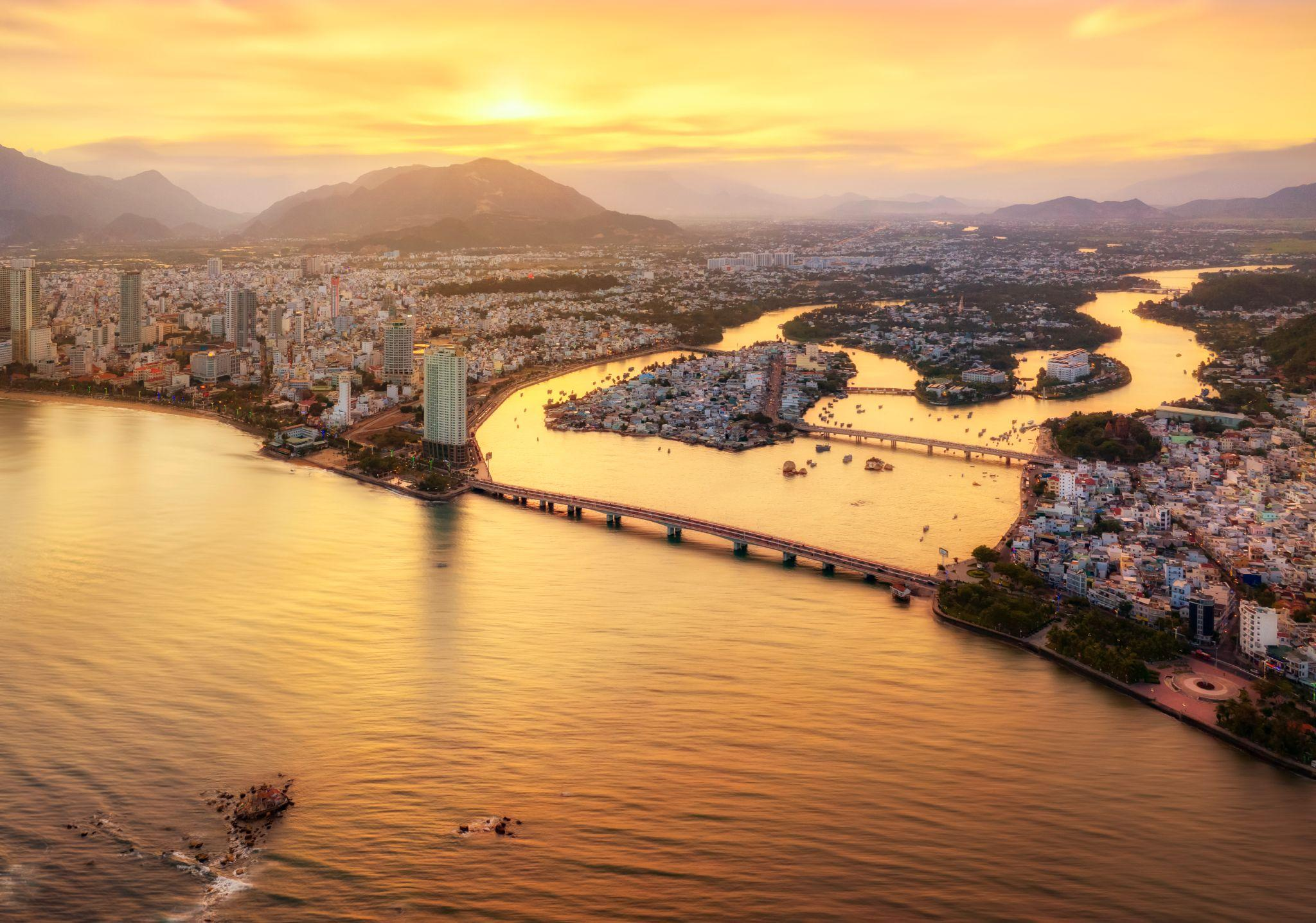 |
A view of Nha Trang's bayside urban area. Photo: La Tien Villa |
A view of Nha Trang's bayside urban area. Photo: La Tien Villa
According to a survey conducted by VnExpress, 63% of foreigners interviewed expressed their intention to move to Nha Trang in the future. When asked why, most cited the combination of coastal and mountain scenery, the mild climate, and the peaceful lifestyle as major draws. Reasonable living costs, a family-friendly environment, developing infrastructure and essential services, and the ability to work remotely were also frequently mentioned.
Many international visitors noted that Nha Trang offers a good work-life balance, something not all large cities can provide.
North Nha Trang: A focal point for international residents
While central Nha Trang has established itself as a vibrant tourist city, North Nha Trang is becoming a focal point for international residents, adding a new dimension to the city. No longer just a vacation destination, it is being chosen by many foreign families and individuals as a place for long-term residence.
Unlike the crowded city center, the northern area offers ample land, moderate population density, unspoiled landscapes, and a long coastline next to mountains, providing a peaceful and spacious living environment.
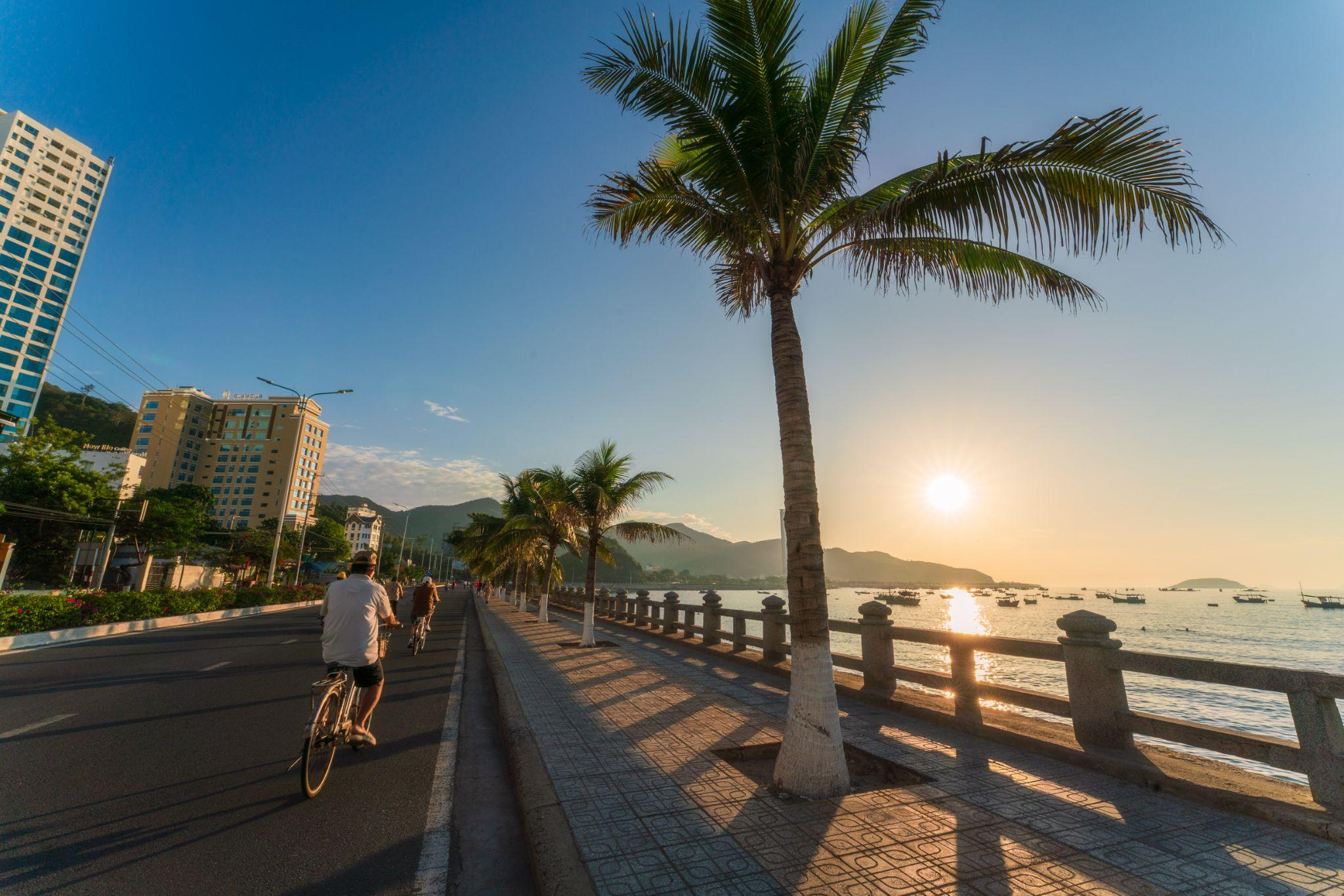 |
Residents cycling in the early morning in North Nha Trang. Photo: La Tien Villa |
Residents cycling in the early morning in North Nha Trang. Photo: La Tien Villa
In recent years, this area has seen rapid development in infrastructure and amenities. The expanded Pham Van Dong Boulevard has created a continuous coastal traffic route, conveniently connecting to the city center. The Khanh Hoa - Buon Ma Thuot highway opens a direct link to the Central Highlands.
Besides transportation, essential amenities such as international schools, high-quality hospitals, shopping malls, and entertainment areas are also being developed, creating favorable conditions for the international community to settle down.
The area already boasts supermarkets, service centers such as Vincom Plaza and Lotte Mart, and bilingual and international schools. Community activities like yoga, mountain climbing, and water sports are also regularly enjoyed by foreign residents, creating a diverse cultural environment.
Yoon Seok-hyun (58, South Korea), who has lived in North Nha Trang with his wife since 2022, said the peaceful environment, international hospitals, large supermarkets, and community activities have helped them adapt easily. Similarly, Marco Delphino (36, Spain), a freelancer in the creative content field, moved from Bangkok to Nha Trang in early 2024 to work remotely while enjoying the coastal lifestyle.
According to the Immigration Department, Khanh Hoa province has 1,089 foreigners with valid temporary or permanent residence cards. About 70% are foreigners working for businesses and industrial parks, while the remaining 30% are individuals with family ties (married to Vietnamese citizens) or children of Vietnamese origin.
 |
Residents enjoying mountain climbing in North Nha Trang. Photo: La Tien Villa |
Residents enjoying mountain climbing in North Nha Trang. Photo: La Tien Villa
To meet the growing demand of international residents, North Nha Trang has begun developing urban areas planned to international standards. A notable example is the 44-hectare Libera Nha Trang project on Pham Van Dong Boulevard.
The urban area is managed and operated by Gran Melia Hotels & Resorts, an international hotel brand, ensuring high-quality service. Amenities include a marina, entertainment areas, an international school, sports and wellness facilities, fully meeting the long-term living, working, and leisure needs of a multinational community.
Experts believe that the combination of natural landscapes, modern infrastructure, and the emergence of international urban areas has made North Nha Trang a "focal point for international residents." It is not just a vacation destination but is becoming a center for long-term coastal settlement, adding a new dimension to Nha Trang's image – from a familiar tourist city to a destination for an international community seeking a high-quality and sustainable lifestyle.
Hoang Dan




